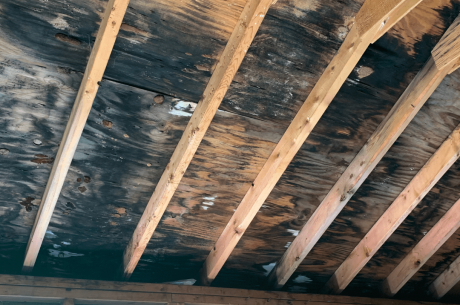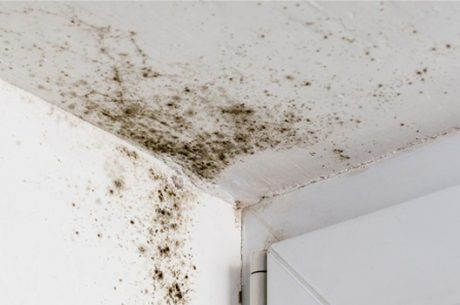Mold is more than just an unsightly nuisance in your home; it poses serious health risks and can lead to significant property damage if not addressed promptly. Mold exposure can trigger allergies, cause respiratory issues, and even lead to more severe health conditions in vulnerable individuals.
If you’re a homeowner in New Jersey dealing with mold issues, understanding the cost of mold remediation is crucial. This article will guide you through the factors that affect mold remediation costs in NJ and what you can expect during the process. By gaining a clearer understanding of these elements, you can make informed decisions to protect both your property and your health.
What Is Mold Remediation?
Mold remediation involves the removal, cleaning, and treatment of mold-contaminated areas to prevent further growth and potential health risks. This process is essential for maintaining a healthy indoor environment and protecting your property from mold damage. Mold remediation not only focuses on eliminating visible mold but also on addressing the underlying moisture issues that contribute to mold growth.
By identifying and rectifying these problems, mold remediation helps prevent future outbreaks, ensuring a safer living environment. The process often includes steps such as containment, air filtration, and thorough cleaning of affected areas, all of which are crucial for effective mold control.
Factors That Influence Mold Remediation Costs in NJ
The cost of mold remediation in New Jersey can vary widely based on several factors. Understanding these factors can help homeowners budget effectively and choose the right remediation service. Here are the key elements that influence the overall price:
1. Extent of Infestation
The extent of the mold infestation is one of the most significant factors affecting the cost. Larger areas with widespread mold growth require more time, labor, and materials for effective remediation, leading to higher costs. The size of the affected area often dictates the complexity of the remediation process, with larger infestations requiring more extensive measures such as increased containment and longer treatment times.
2. Location of Mold
The location of the mold within your home can also impact the cost. Mold in easily accessible areas like basements or attics may cost less to remediate than mold hidden within walls or under flooring, which requires more invasive techniques to reach and remove. Areas that are difficult to access may require specialized equipment and additional labor, further increasing the cost. Moreover, mold located in areas with limited ventilation may pose additional challenges, necessitating advanced air filtration systems to ensure safe and effective removal.
3. Type of Mold
Different types of mold may require different remediation approaches. Black mold, for example, is particularly hazardous and may necessitate more stringent safety measures and specialized removal techniques, thus increasing the overall cost. The presence of toxic molds often requires more extensive testing and monitoring both during and after the remediation process to ensure complete removal and safety. Furthermore, certain molds may be resistant to standard cleaning agents, requiring specialized treatments and methods that can further elevate costs.
4. Severity of Damage
The severity of the mold damage can also influence the cost. If mold has caused significant structural damage, additional repairs may be needed, adding to the overall expense of the remediation process. Structural damage may involve the replacement of materials such as drywall, insulation, and wooden supports, which can be costly and time-consuming. The need for such extensive repairs underscores the importance of early detection and intervention, as addressing mold issues before they escalate can save both time and money.
5. Professional vs DIY
While some minor mold issues can be handled with DIY methods, significant infestations often require professional services. Hiring a mold remediation professional ensures thorough and safe removal, but it typically comes at a higher price than DIY solutions. Professionals bring expertise, specialized equipment, and a guarantee of thoroughness that DIY methods may lack, making them a worthwhile investment for serious mold problems. However, for minor issues, DIY solutions can be a cost-effective option if approached with the right knowledge and care.
Average Cost of Mold Remediation in NJ

The cost of mold remediation in New Jersey typically ranges from $500 to $6,000, depending on the factors mentioned above. On average, homeowners can expect to pay around $2,500 for a professional mold remediation service. This average cost reflects a mid-range mold problem, with expenses potentially rising for more extensive issues or falling for minor infestations. However, prices can vary significantly, so it’s essential to obtain estimates from multiple service providers before making a decision.
By comparing quotes, homeowners can ensure they receive fair pricing and quality service tailored to their specific needs.
Breakdown of Common Costs
Inspection and Testing: $200 – $600
The initial inspection is crucial for identifying the type and extent of the mold problem, guiding the remediation process. Testing may include air quality assessments and surface sampling to determine the mold species present.
Mold Removal and Cleaning: $500 – $4,000
This involves the physical removal of mold and thorough cleaning of affected areas using specialized agents. The cost varies with the size and complexity of the infestation.
Repairs and Restoration: $200 – $2,000
After mold removal, any damaged structures are repaired to restore the home’s integrity. This may involve replacing materials like drywall and ensuring all surfaces are free from mold traces.
These costs can fluctuate based on the specific circumstances of each mold infestation. Factors such as the urgency of the situation and the chosen service provider can also impact the final price.
What to Expect During the Mold Remediation Process\

Understanding the mold remediation process can help you prepare for what to expect and ensure the job is done correctly. Knowledge of the process also allows homeowners to better communicate with service providers and verify that all necessary steps are taken. Here’s a general overview of the steps involved:
Step 1: Inspection and Assessment
The process begins with a thorough inspection and assessment of the mold-infested areas. Mold remediation professionals will identify the type and extent of mold growth and develop a tailored remediation plan. This step may involve moisture mapping and the use of infrared cameras to detect hidden mold sources. A full assessment ensures all affected areas are addressed, preventing future mold growth.
Step 2: Containment and Air Filtration
To prevent mold spores from spreading during the removal process, affected areas are contained, and specialized ventilation systems are set up to filter the air. Containment typically involves physical barriers and negative air pressure to isolate the mold-infested areas. Proper ventilation ensures that airborne spores are captured and removed, protecting unaffected parts of the home from contamination.
Step 3: Removal and Cleaning
Mold-infested materials are removed, and affected surfaces are thoroughly cleaned with specialized cleaning agents. In some cases, antimicrobial treatments are applied to prevent future mold growth. This step may also involve sanding or sealing surfaces to ensure complete mold eradication. Professionals use high-efficiency particulate air (HEPA) vacuums and advanced cleaning solutions to achieve thorough decontamination.
Step 4: Repairs and Restoration
Once the mold is removed, any damaged areas are repaired and restored to their original condition. This may involve replacing drywall, insulation, or other structural components. Restoration not only addresses visible damage but also ensures that underlying issues, such as leaks or poor ventilation, are corrected. These repairs are crucial for preventing future mold problems and maintaining the home’s structural integrity.
Step 5: Final Inspection
After remediation, a final inspection is conducted to ensure all mold has been effectively removed and the area is safe for occupancy. This inspection may include air quality testing and visual assessments to verify the success of the remediation efforts. A thorough final inspection provides peace of mind, confirming that the home is free from mold hazards and safe for residents.
Conclusion
Mold remediation is essential for maintaining a healthy home and preserving your property’s value. Addressing mold early helps prevent health risks and structural issues, and understanding the costs and process allows you to make informed decisions.
If you suspect mold in your home, contact our team at PuroClean of Ridgewood. We offer expert mold remediation backed by fast response times and proven results. Let us help you restore a safe, clean living environment with professional care you can trust.



